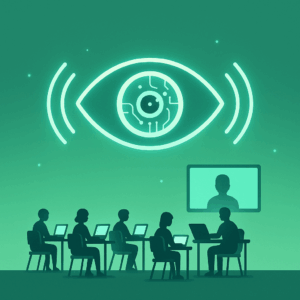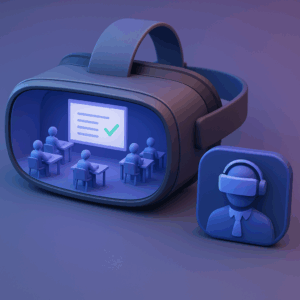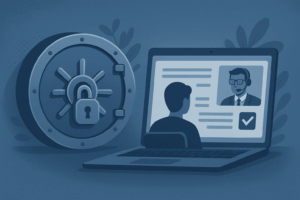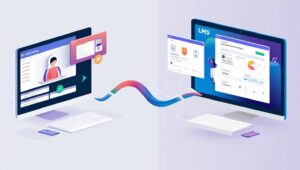The hiring landscape has dramatically transformed in recent years, with remote pre-employment assessments becoming the norm for screening candidates. These online assessments promise convenience and efficiency, but they also have a dark side—cheating. In pursuing a dream job, some candidates resort to unethical tactics to outsmart the system. This compromises the integrity of the recruitment process and leads to costly hiring mistakes. Fortunately, the rise of advanced proctoring technologies has equipped employers with the tools to maintain fairness and authenticity in assessments. Let’s dive into the seven most common ways candidates attempt to cheat during pre-employment tests—and how proctoring solutions act as a powerful line of defense.
1. Using Chatbots and AI Tools for Real-Time Answers
With the increasing availability of AI-based tools like ChatGPT and other real-time code and content generators, candidates often open a second browser window or use another device to get instant answers. This is particularly common in coding, writing, and problem-solving tests.
How Proctoring Prevents It:
Live and automated proctoring systems can monitor browser activity, block new tabs, restrict access to other software, and flag suspicious behavior. Secure browsers and lockdown features also prevent candidates from navigating away from the test environment.
It is one thing to read about our amazing solution and another to experience it in action.
2. Getting Help from Someone Else (a Proxy Test Taker)
Some candidates go to the extent of having someone else take the test on their behalf—a friend, a colleague, or even a paid test-taker. This proxy participation may happen in person or remotely via screen-sharing platforms.
How Proctoring Prevents It:
Advanced identity verification features, such as facial recognition, government ID matching, and periodic re-authentication, ensure the right person is taking the test. Live proctors can intervene in real time if they detect anomalies in behavior, voice mismatches, or background activity.
3. Using Hidden Devices and Cheat Sheets
In-person assessments used to offer an advantage in monitoring physical behavior, but remote setups have opened the door to sneaky tactics like hidden notes, mobile phones placed off-camera, or even smart glasses to access content discreetly.
How Proctoring Prevents It:
Multi-camera setups—like Proctortrack’s 2-camera approach—allow a complete 360° room scan to eliminate blind spots. AI-powered proctoring tools can detect unusual eye movements, multiple voices, or even background screen flickers that indicate the presence of unauthorized devices.
4. Collaborating with Someone in the Same Room
Candidates often collaborate with someone sitting nearby, giving subtle hints, using hand signals, or whispering answers. It becomes hard to detect such coordinated efforts, especially in unproctored environments.
How Proctoring Prevents It:
Audio analysis, facial movement tracking, and room scan requirements at the start of the test help identify multiple people in the room. Live proctors and AI can flag noises, second voices, or shadows that suggest unauthorized collaboration.
A proactive security approach minimizes cheating risks while ensuring a seamless test experience at budget-friendly pricing.
Know our Pricing!
5. Recording the Test for Future Use
Some candidates try to record the assessment questions using screen-capture software, mobile cameras, or browser extensions, intending to share them with others or use them later for practice.
How Proctoring Prevents It:
Proctoring software disables screen sharing, print screen functions, and third-party recording software. In addition, watermarking and logging every screen activity act as a deterrent and create an auditable trail in case of data leaks.
6. Manipulating System Clocks and Test Timers
Tech-savvy candidates sometimes try to manipulate the system clock to extend deadlines or crash the browser mid-test to get a reset or second chance with additional time.
How Proctoring Prevents It:
Proctoring tools maintain centralized timestamps and auto-sync with cloud-based servers to avoid manipulating local clocks. Any disconnection or test interruption is logged and flagged for manual review.
7. Using Dual Monitors or External Keyboards
Dual monitors open up resources while taking the test on the main screen. Similarly, candidates may use programmable keyboards with pre-loaded responses or shortcuts.
How Proctoring Prevents It:
Proctoring solutions detect dual-monitor setups at the start of the test and either block them or alert the invigilator. Any unauthorized hardware activity is recorded and flagged during the session. AI also analyzes typing patterns to identify inconsistencies.
Summing up
The integrity of pre-employment assessments is vital for organizations to hire the right talent, reduce turnover, and avoid costly hiring mistakes. As cheating tactics evolve, so must the technology used to combat them. Modern proctoring solutions—featuring real-time monitoring, AI-driven behavior analysis, identity verification, and secure browsers—serve as the shield that protects the authenticity of online assessments. By adopting these tools, businesses uphold the fairness of their hiring processes and send a clear message: Merit matters, and integrity is non-negotiable.











